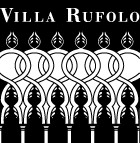

The Garden of the Soul
The garden of Villa Rufolo, known as the "Garden of the Soul", occupies two levels and is reached by following a tree-lined avenue with a distinctly Victorian air. The ancient walls, almost hidden by cypresses and lime trees, leads to the Moorish cloister. You have time to savour the noble lines of the monument's architecture before descending a few steps to the first level of the garden.
The redolent atmosphere infuses you with the spirit of the Romantic garden, with echoes of Boccaccio's stirring poetry. The history of the garden can be divided up into three distinct phases:
the original phase, dating back to the 13th century, when the Villa was built.
the medieval phase, of which only a few traces remain, recalling the garden Boccaccio described on the first day of the Decamerone, when it may have extended all the way to the Mormorata, where the Rufolo family owned other land.
the Romantic phase, with Francis Nevile Reid as its genius loci, a Scottish philanthropist and expert on botany and ancient art, recognised in his appointment as Honorary Superintendent by the Prefect of Naples.
Reid's tenure marked the renaissance of the gardens in Villa Rufolo and also the beginning of the Villa's renown. It was in May 1880 that Wagner visited Ravello and "discovered" the enchanted garden of Klingsor as he had imagined it for his opera Parsifal. In his mind's eye Wagner saw the imposing medieval tower collapse into the void and turn into a magical garden, with the tropical plants taking on the likeness of beguiling maidens, until the garden itself is transformed into a desert as Parsifal kills the wizard Klingsor.
Drawn by the mild climate and the beauty of the surroundings, Nevile Reid chose Villa Rufolo as his summer residence and began to stock the garden with various species of exotic plants.
His activities in Ravello were not limited to restoring the villa and reviving its gardens. He also undertook a number of philanthropic ventures benefiting the whole township, such as a new system for supplying the town with water, which overcame the problem of irrigating the gardens. In 1863, by means of a convention with the municipality, he had an aqueduct built at his own expense to bring water from the locality of Tabernacolo right to the main square, piazza Vescovado, where still today there is a functioning public fountain. Reid also committed himself to the expenses for the upkeep of the aqueduct and the fountain in perpetuity. The gardens were placed under the supervision of Luigi Cicalese, and Reid kept up a serried correspondence with his head gardener over a number of years. In these years the gardens featured different plant species, both autochthonous and exotic, with a prevalence of roses, and in particular the rose known as "Old Glory", although nowadays no traces remain.
In the course of time, and in particular in the twentieth century, the gardens have undergone a number of demolitions: during the war they were commandeered by the British forces; in 1951 they suffered from a particularly violent storm; and in 1955 the construction of the provincial road did away with the upper part of the garden.











